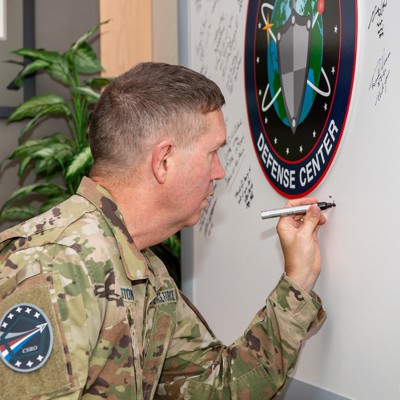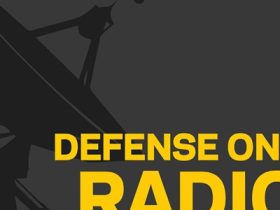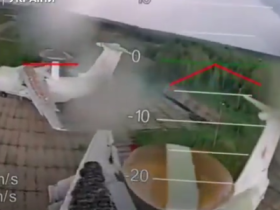The Space Force has defined what it means by “space warfighting” in a new document that service officials hope will give a clearer picture to guardians and joint planners of how the service plans to operate in a future conflict.
The document, dubbed “Space Warfighting – A Framework for Planners,” represents the “natural maturing” of the 5-year-old Space Force, a service that once shied away from publicly saying it would conduct offensive and defensive operations in space, said Lt. Gen. Shawn Bratton, Space Force deputy chief of space operations, strategy, plans, programs, and requirements.
“This document is really intended to do that, to introduce sort of a common framework, common lexicon that we can use in our training and in our education programs, and really write down things that then guardians can argue about and debate and think about and use as a tool in their planning that really is about fighting in the domain,” Bratton told reporters ahead of the release.
Service officials have been increasingly vocal in recent weeks about the need for weapons in space and gaining “space superiority”—a term the framework defines as the ability for forces to operate in a “time and place of their choosing” without interference, while denying the same to the enemy.
To achieve this, officials say the service will conduct counterspace operations in three main areas: orbital, electromagnetic, and cyberspace warfare.
The framework lists possible offensive actions, including “orbital strike” to destroy or degrade an adversary’s satellites, “space link interdiction” to disrupt their flow of information, and “terrestrial strike” to take out an adversary’s ground systems, such as command and control or launch infrastructure.
The defensive actions listed include active space defenses—like protecting satellites by “escorting” them—and passive space defenses, such as building satellites that can withstand threats or move around.
However, these capabilities aren’t a list of weapons the service already has in hand, Bratton said. The framework will “start the discussion of what we need to compete and win in space during conflict,” he said.
Policy discussions are still needed in order to determine how and when the service will conduct operations in space, Bratton said. But they will follow rules of engagement just like operations in other domains, he said.
“I think this document educates—Hey, there’s a thing called rules of engagement. You should understand how that works, and we should understand concepts like positive identification that are all standard in air and land and sea. There’s nothing different here. I really think it’s just the normalization of how everyone else conducts warfare now, the Space Force is mature to the point where, we’re just going to ask for authorities and the president will either delegate them or not,” Bratton said.
The framework also says the joint force won’t be able to succeed in a future fight if it can’t gain superiority in space—a call that Space Force officials hope will help position the service to get the money it needs to buy new systems.
“The service believes absolutely that it is our responsibility to protect the joint force from space-enabled attack, and that involves both offensive and defensive warfighting capabilities…we feel the weight of that. It’s not just we’re going to fight in space and see who wins the space fight. It’s—we’re going to fight in space to make sure the aircraft carrier doesn’t get struck and 5,000 sailors don’t go to the bottom of the ocean,” Bratton said.
Looking ahead, the service plans to incorporate the framework into training and education materials at Space Training and Readiness Command, or STARCOM, so guardians get it into their “DNA” early on, Bratton said.
Read the full article here








Leave a Reply